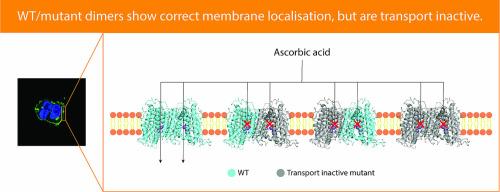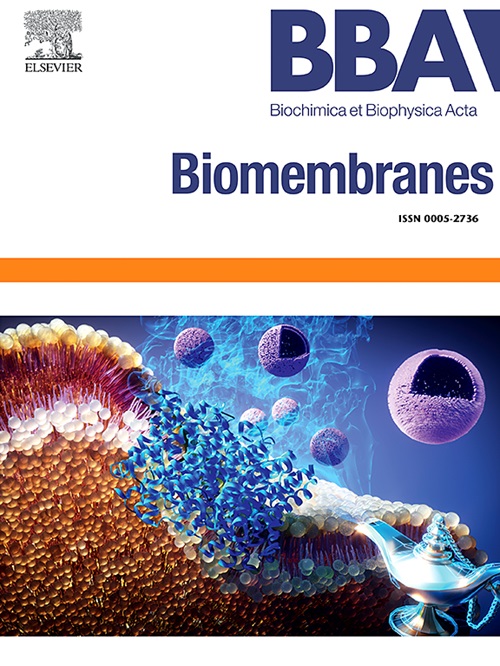人类 SVCT1 的二聚体是运输功能的关键。
IF 2.5
3区 生物学
Q3 BIOCHEMISTRY & MOLECULAR BIOLOGY
引用次数: 0
摘要
人类和其他灵长类动物缺乏合成必需营养素维生素 C 的能力,而维生素 C 完全来自饮食。依赖 Na+ 的维生素 C 转运体 SVCT1 和 SVCT2 是有效吸收维生素 C 的关键,它们是核碱基抗坏血酸转运体(NAT)家族的成员。SVCT1 和 2 能积极地将还原型维生素 C(抗坏血酸)转运到关键组织中。小鼠 SVCT1 的最新结构揭示了其与底物结合的分子基础,而且与 NAT 家族中其他具有结构特征的成员一样,SVCT1 也是以紧密结合的二聚体形式存在的。SVCT1 可能通过升降机机制发挥作用,每个原体的核心结构域都能结合底物,并携带底物穿过膜。在这里,我们探索了人类 SVCT1 的一系列变体的功能,发现了一系列参与底物选择和结合的残基,并证实了 C 端在膜定位中的重要性。此外,我们利用显性负突变体表明,二聚体对于运输功能至关重要,这与之前在真菌同源物 UapA 中看到的情况相同。此外,我们还发现,SVCT1 的 C 端截短定位缺陷会阻碍与野生型 SVCT1 共同表达的正确定位。这些结果清楚地表明了二聚体在 SVCT1 的正确运输和运输活性中的重要性。本文章由计算机程序翻译,如有差异,请以英文原文为准。

The dimer of human SVCT1 is key for transport function
Humans and other primates lack the ability to synthesize the essential nutrient, Vitamin C, which is derived exclusively from the diet. Crucial for effective vitamin C uptake are the Na+ dependent Vitamin C transporters, SVCT1 and SVCT2, members of the nucleobase ascorbate transporter (NAT) family. SVCT1 and 2 actively transport the reduced form of Vitamin C, ascorbic acid, into key tissues. The recent structure of the mouse SVCT1 revealed the molecular basis of substrate binding and that, like the other structurally characterised members of the NAT family, it exists as a closely associated dimer. SVCT1 is likely to function via the elevator mechanism with the core domain of each protomer able to bind substrate and move through the membrane carrying the substrate across the membrane. Here we explored the function of a range of variants of the human SVCT1, revealing a range of residues involved in substrate selection and binding, and confirming the importance of the C-terminus in membrane localisation. Furthermore, using a dominant negative mutant we show that the dimer is essential for transport function, as previously seen in the fungal homologue, UapA. In addition, we show that a localisation deficient C-terminal truncation of SVCT1 blocks correct localisation of co-expressed, associated wildtype SVCT1. These results clearly show the importance of the dimer in both correct SVCT1 trafficking and transport activity.
求助全文
通过发布文献求助,成功后即可免费获取论文全文。
去求助
来源期刊

Biochimica et biophysica acta. Biomembranes
生物-生化与分子生物学
CiteScore
8.20
自引率
5.90%
发文量
175
审稿时长
2.3 months
期刊介绍:
BBA Biomembranes has its main focus on membrane structure, function and biomolecular organization, membrane proteins, receptors, channels and anchors, fluidity and composition, model membranes and liposomes, membrane surface studies and ligand interactions, transport studies, and membrane dynamics.
 求助内容:
求助内容: 应助结果提醒方式:
应助结果提醒方式:


